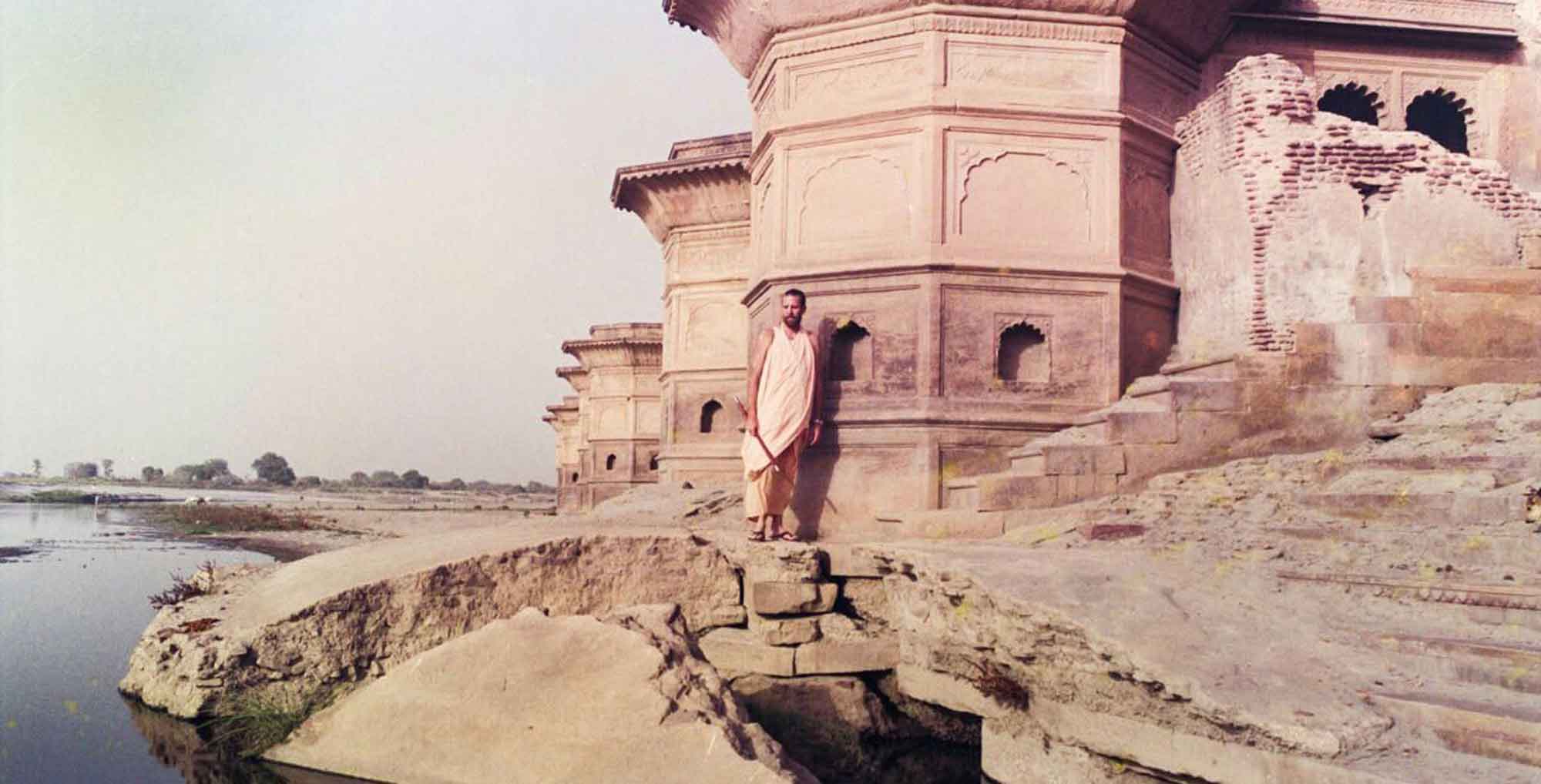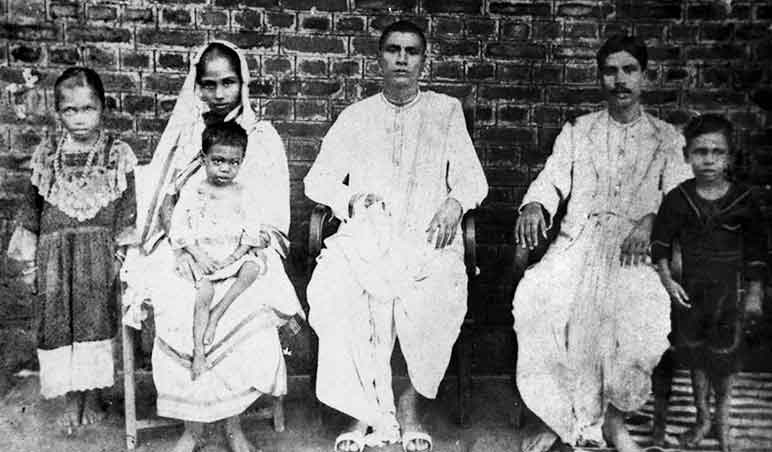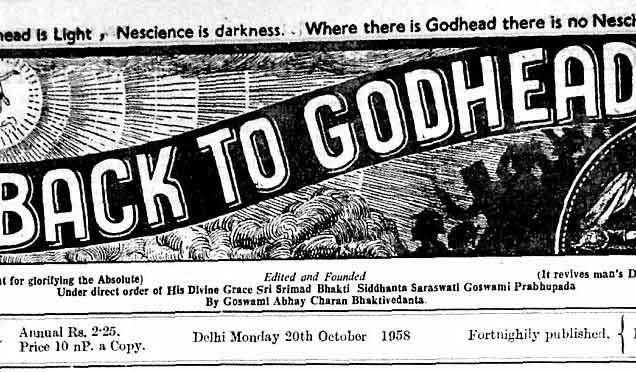Overview
Planets of Faith’ was written by Swami B.G. Narasingha in 1998. Swami Narasingha discusses śraddhā (faith) as the ‘halo of Śrīmatī Rādhārāṇī’ and how it is not fully understood by many.
Last week I came across some discussion on the internet regarding śraddhā – the importance of faith, was it essential or only a necessity for the beginner? I would like to see more discussion on this topic, personally, because I see it as an area of siddhānta that is little understood by a vast majority of the Gauḍīya Vaiṣṇavas residing in western countries. I say amongst those Vaiṣṇavas residing in western countries because, at least among the followers of Śrīla Bhaktisiddhānta Sarasvatī Ṭhākura in India I have never found any lacking of understanding in that area. To the contrary – whatever meagre reference I have to that sublime point has been gained by their association.
I have seen in the works of Śrīla Bhaktivinoda Ṭhākura that śraddhā has been described as the ‘halo of Śrīmatī Rādhārāṇī’ and I have heard this also from Śrīla Śrīdhara Mahārāja. Amongst the Gauḍīyas the Supreme Goddess of Fortune, Śrīmatī Rādhārāṇī, is called Śraddhā Devī or the predominating deity of faith. She is faith personified. She has more faith and deeper faith in Kṛṣṇa than any other entity. Therefore, faith must be given the highest position. Surely it is not simply an abstract concept for beginners with no essential purpose for advanced souls.
There is a nice analogy in this respect in that Kṛṣṇa is like a dark rain cloud on the dark moon night (He is indistinguishable, unknown, and unknowable). In other words, we cannot see or distinguish the cloud from the night sky. However, when there is lightening, a flash of light in the night sky, at that time we are given the capacity to see the cloud. By light we can thus distinguish the cloud. Similarly, Śrīmatī Rādhārāṇī is the only agency by which we can know or realise Kṛṣṇa. She alone has the capacity to reveal Kṛṣṇa to the fallen conditioned souls and that capacity is Her investment in all living beings which appears in the heart as faith, śraddhā. Thus She is known as Śraddhā Devī.
In Gauḍīya siddhānta the higher position is given to faith rather than to knowledge. In fact the verse yasya-deve-para-bhaktir confirms this point of Gauḍīya siddhānta;
yasya deve parā bhaktir yathā deve tathā gurau
tasyaite kathitā hy arthāḥ prakāśante mahātmanaḥ
“Only unto those great souls who have implicit faith in both the Lord and the spiritual master are all the imports of Vedic knowledge automatīcally revealed.” (Śvetāśvatara Upaniṣad 6.38)
Our Guru Mahārāja, Śrīla A.C. Bhaktivedānta Swami Prabhupāda, was very fond of this verse. If one does not have proper faith in Hari, guru, and Vaiṣṇava then one’s progress in Kṛṣṇa consciousness will be next to nil. Knowledge, even the study of the Vedas, will be to no avail unless one has śraddhā in guru and Kṛṣṇa.
It is a fact that śraddhā is often confused with the blind faith of various mundane religionists and others. The faith/belief that there are many gods or that Durgā, Indra, Gaṇeśa, or Jesus is God is not actually śraddhā anymore than having a university degree means that one is a brāhmaṇa. A brāhmaṇa means one who knows what is Brahman/Parabrahman. Similarly, śraddhā means conviction that by serving Kṛṣṇa all other purposes are served. We are not interested in mere credulity.
Śraddhā, faith proper, is the instrument to understand and to know the higher subjective realm. Knowledge (jñāna) is useful only in as much as it destroys ignorance and increases our śraddhā. Only śraddhā which takes us to surrender, śaraṇāgati, can fulfil the hearts innermost hankering and aspiration. Here is a nice quote from Śrīla Śrīdhara Mahārāja in regards to the limitations of knowledge.
“The innermost hankering of every living soul is for beauty, love, affection, and harmony; not for power, knowledge, or anything else. This is the diagnosis of the whole creation in time and space: their common cause is one. But it is rare for a soul to reach such a clear stage of hankering for reality as to understand this point. Few souls are to be found in this world who are really conscious of their innermost necessity, who realise, “We want Kṛṣṇa! We want Vṛndāvana!” Such sincere souls are not easily found. An intellectual understanding of Kṛṣṇa consciousness is impossible. Just as a bee cannot taste honey by licking the outside of a glass jar, one cannot enter the domain of higher spirit through the intellect. Only by service will Kṛṣṇa be satisfied and come down, only then will we be able to understand the nature of higher plane. This is Vedic knowledge. We are taṭasthā-śakti, marginal potency, and if we want to know any truth about higher reality, we must realise that it is more subtle than our existence, it is super-subjective: It can touch us, but we cannot climb up to that domain out of our own sweet will. Only if we are given the grace which can take us up can we go. One who has this understanding will be able to combat all the existing intellectualists. The intellect has no capacity to enter into the higher subjective area. That supreme truth is atīndriya-manasā gocaraḥ: beyond the plane of the senses, mind, and intellect. This expression manaso vapuṣo vāco vaibhavaṁ tava gocara – by Brahmā, admitting to Kṛṣṇa that He was beyond the reach of his body, mind, and words, was not only a lip-deep statement of the mouth. If we want to know the absolute truth, the only condition for realising Him is a submissive attitude. In that way, He may be satisfied with our attempt and reveal Himself to us. Divine revelation is not a matter of research within this world—we should have a sincere heart to serve.
In Śrīmad Bhāgavatam it is written:
matir na kṛṣṇe parataḥ svato vā
mitho’bhipadyeta gṛha-vratānām
adānta-gobhir viśatāṁ tamisraṁ
punaḥ punaś carvita-carvaṇānām
(Bhāg.7.5.30)
Śrīmad Bhāgavatam tells us that we can try to enter the world of higher reality through intellectualism, but we will again come back, baffled in our attempts. If we try to press with our intelligence to enter into that domain, we will come back dissatisfied in despair and will wander here within this mortal world again and again.
śreyaḥ-sṛtiṁ bhaktim udasya te vibho
kliśyanti ye kevala-bodha-labdhaye
teṣām asau kleśala eva śiṣyate
nānyad yathā sthūla-tuṣāvaghātinām
“O Lord, those who want to have a clear conception of You through their intellect find their attempts useless. Their endeavors end only in frustration, like those who try to beat rice from an empty husk.” (Bhāg. 10.14.4)
So jñāna, knowledge, is like an empty husk. Energy and knowledge are only outer aspects. The real substance, the rice, is devotion—love. That is the tasteful thing within. Other things are covers (jñāna-karmādy-anāvṛtam). But what is within the cover is tasteful, eternal, auspicious, and beautiful: satyam, śivam, sundaram. Beauty is reality, ecstasy is reality; everything else is only an outer cover – with the cover, we cannot get the substance within. Then our life becomes a disappointment.”
So the conclusion being that if we neglect the importance of śraddhā we will ultimately not be successful.
Related Articles
- Śrī Śrī Rādhā Kṛṣṇa & The Fountainhead of All Tattvas by Śrīla Bhakti Pramoda Purī Gosvāmī
- A Prayer Composed on the Occasion of the Disappearance of Śrīla Gadādhara Paṇḍita by Śrīla Bhakti Pramoda Purī Gosvāmī
- The Appearance of Śrīla Gadādhara Paṇḍita by Śrīla Bhakti Rakṣaka Śrīdhara Deva Gosvāmī
- Śrī Śarādīyā Pūjā by Śrīla Bhakti Rakṣaka Śrīdhara Deva Gosvāmī
- Śrī Lalitā Devī and Śrīmatī Rādhārāṇī by Śrīla Bhakti Rakṣaka Śrīdhara Deva Gosvāmī
- The Appearance of Rādhā-kuṇḍa by Śrīla Bhakti Rakṣaka Śrīdhara Deva Gosvāmī
- From Śraddhā to Prema by Śrīla Bhakti Gaurava Narasiṅgha Mahārāja
- Gāyatrī as Rādhārāṇī by Śrīla Bhakti Gaurava Narasiṅgha Mahārāja
- My Guru is Rādhārāṇī by Śrīla Bhakti Gaurava Narasiṅgha Mahārāja
- The Greatest Negative by Śrīla Bhakti Gaurava Narasiṅgha Mahārāja
- Śrī Rādhāṣṭamī by Śrīla Bhakti Gaurava Narasiṅgha Mahārāja
- Śrīla Śrīdhara Mahārāja and the Gem of All Conceptions by Śrīla Bhakti Gaurava Narasiṅgha Mahārāja
- Planets of Faith by Śrīla Bhakti Gaurava Narasiṅgha Mahārāja
- Rādhā-Pāda Darśana by Śrīla Bhakti Gaurava Narasiṅgha Mahārāja
- The Definition of Faith by Gaura Gopāla Dāsa
Further Reading
Prema Dhāma Deva Stotram with the Narasiṅgha Sevaka Commentary – Verses 61-65
In verses 61 to 65 of 'Prema Dhāma Deva Stotram', Śrīla Śrīdhara Mahārāja narrates the pastime of Śrī Caitanya at Caṭaka Parvata In Purī and explains how the scriptures produced by Brahmā and Śiva are ultimately searching for the personality of Mahāprabhu who is merciful too all jīvas, no matter what their social position.
Prabhupāda Śrīla Sarasvatī Ṭhākura’s Visit to Ayodhyā
With the forthcoming observance of Śrī Rāma Navamī, we present 'Prabhupāda Śrīla Sarasvatī Ṭhākura’s Visit to Ayodhyā' written by Śrīla Bhaktisiddhānta Sarasvatī Ṭhākura Prabhupāda from The Gaudīyā magazine, Vol 3. Issue 21/ In December 1924, after visiting Benares and Prāyāga, Sarasvatī Ṭhākura visited the birth-site of Śrī Rāmācandra in Ayodhyā.
Śaraṇāgati – The Only Path to Auspiciousness
In this article, 'Śaraṇāgati - The Only Path to Auspiciousness', Dhīra Lalitā Dāsī analyses the process of śaraṇāgati (surrender) beginning with śraddhā (faith). She also discusses the role of śāstra and the Vaiṣṇava in connection with surrender.
Ātma Samīkṣā – The Value of Introspection
In this article, "Ātma Samīkṣā – The Value of Introspection" Kalki Dāsa highlights the importance of introspection in the life of a devotee and especially in relation to the worldly environment that surrounds us. He also explains how transcendental sound influences our capacity to introspect.
Prema Dhāma Deva Stotram with the Narasiṅgha Sevaka Commentary – Verses 61-65
In verses 61 to 65 of 'Prema Dhāma Deva Stotram', Śrīla Śrīdhara Mahārāja narrates the pastime of Śrī Caitanya at Caṭaka Parvata In Purī and explains how the scriptures produced by Brahmā and Śiva are ultimately searching for the personality of Mahāprabhu who is merciful too all jīvas, no matter what their social position.
Prabhupāda Śrīla Sarasvatī Ṭhākura’s Visit to Ayodhyā
With the forthcoming observance of Śrī Rāma Navamī, we present 'Prabhupāda Śrīla Sarasvatī Ṭhākura’s Visit to Ayodhyā' written by Śrīla Bhaktisiddhānta Sarasvatī Ṭhākura Prabhupāda from The Gaudīyā magazine, Vol 3. Issue 21/ In December 1924, after visiting Benares and Prāyāga, Sarasvatī Ṭhākura visited the birth-site of Śrī Rāmācandra in Ayodhyā.
Śaraṇāgati – The Only Path to Auspiciousness
In this article, 'Śaraṇāgati - The Only Path to Auspiciousness', Dhīra Lalitā Dāsī analyses the process of śaraṇāgati (surrender) beginning with śraddhā (faith). She also discusses the role of śāstra and the Vaiṣṇava in connection with surrender.
Ātma Samīkṣā – The Value of Introspection
In this article, "Ātma Samīkṣā – The Value of Introspection" Kalki Dāsa highlights the importance of introspection in the life of a devotee and especially in relation to the worldly environment that surrounds us. He also explains how transcendental sound influences our capacity to introspect.








